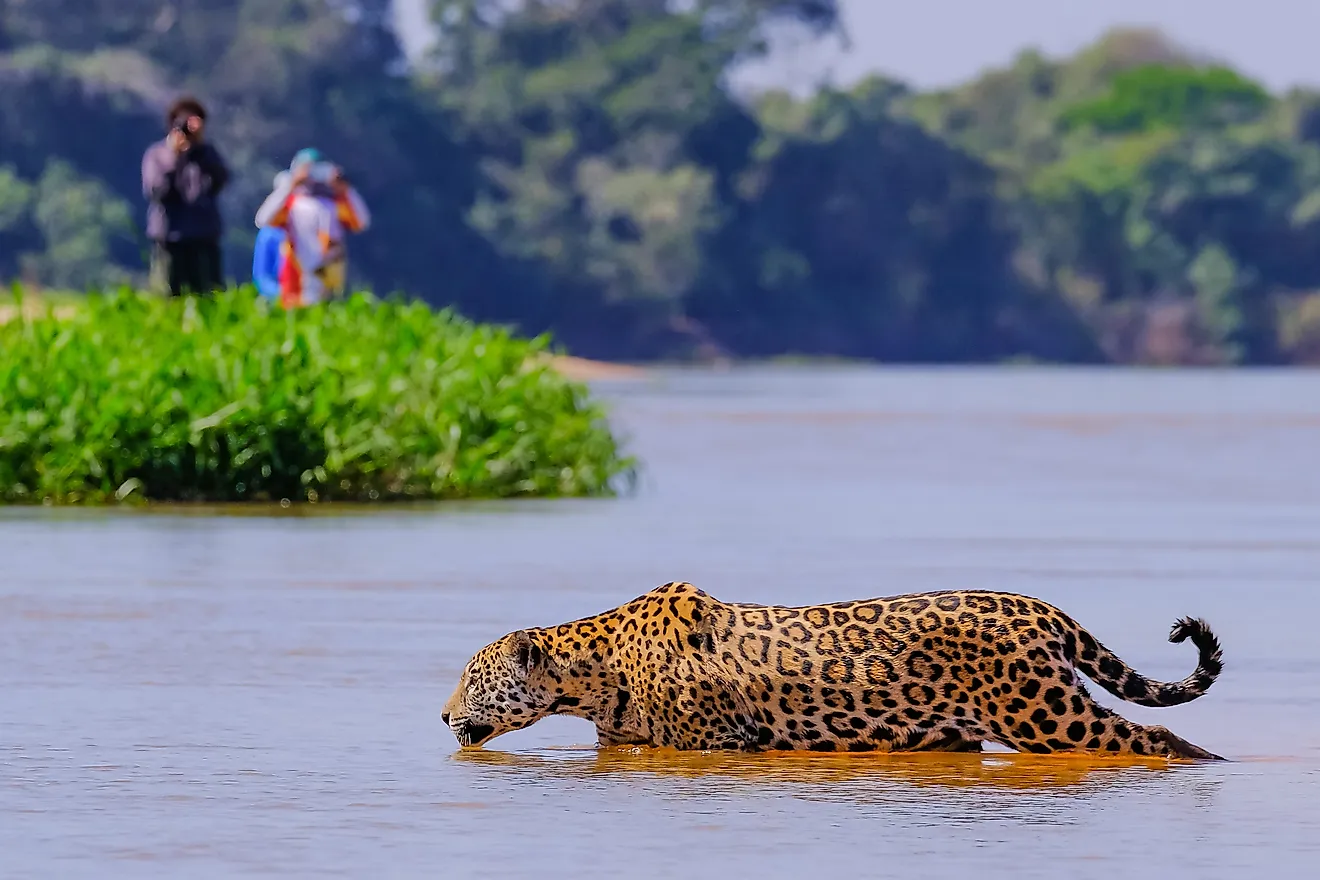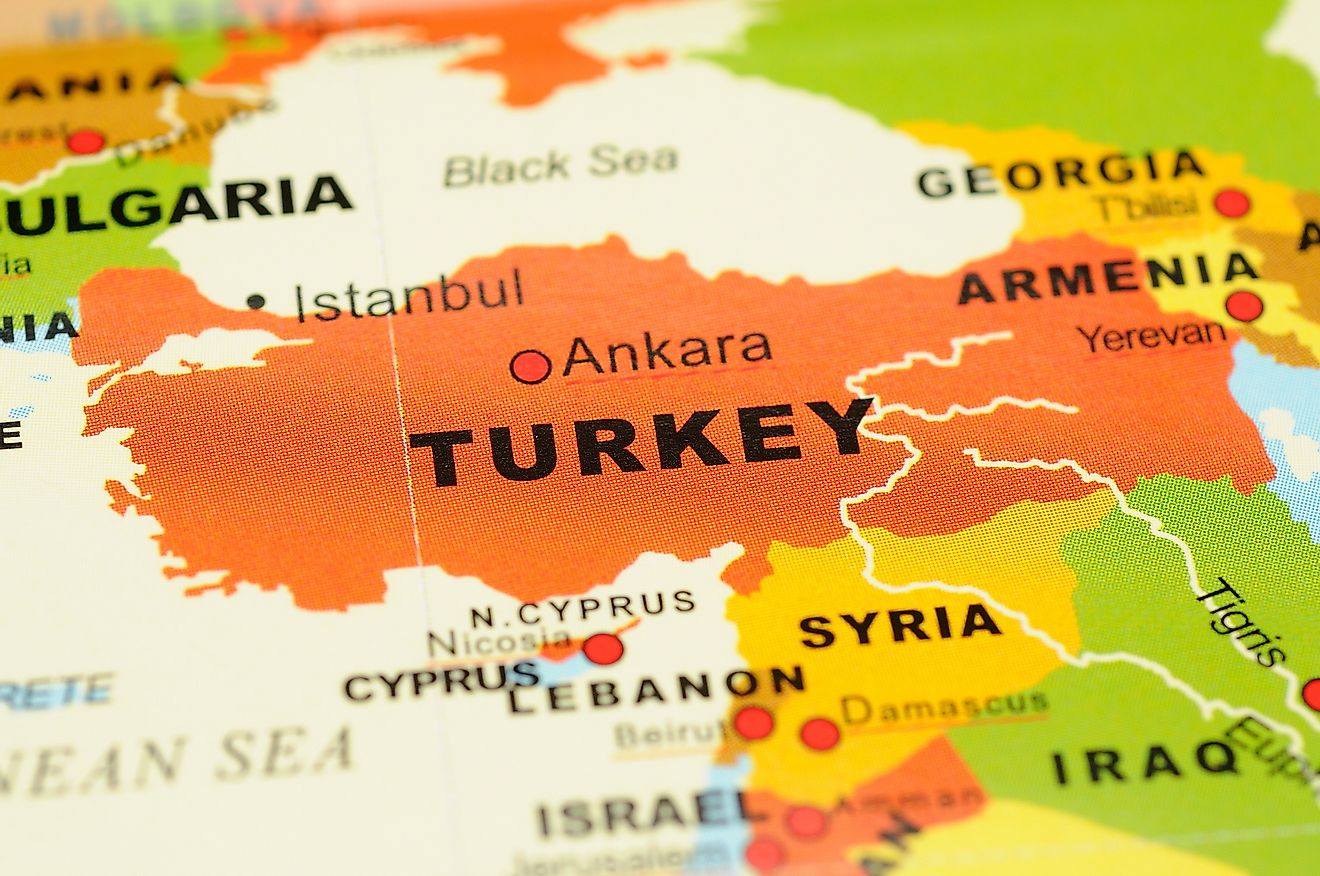Where Is Micronesia?
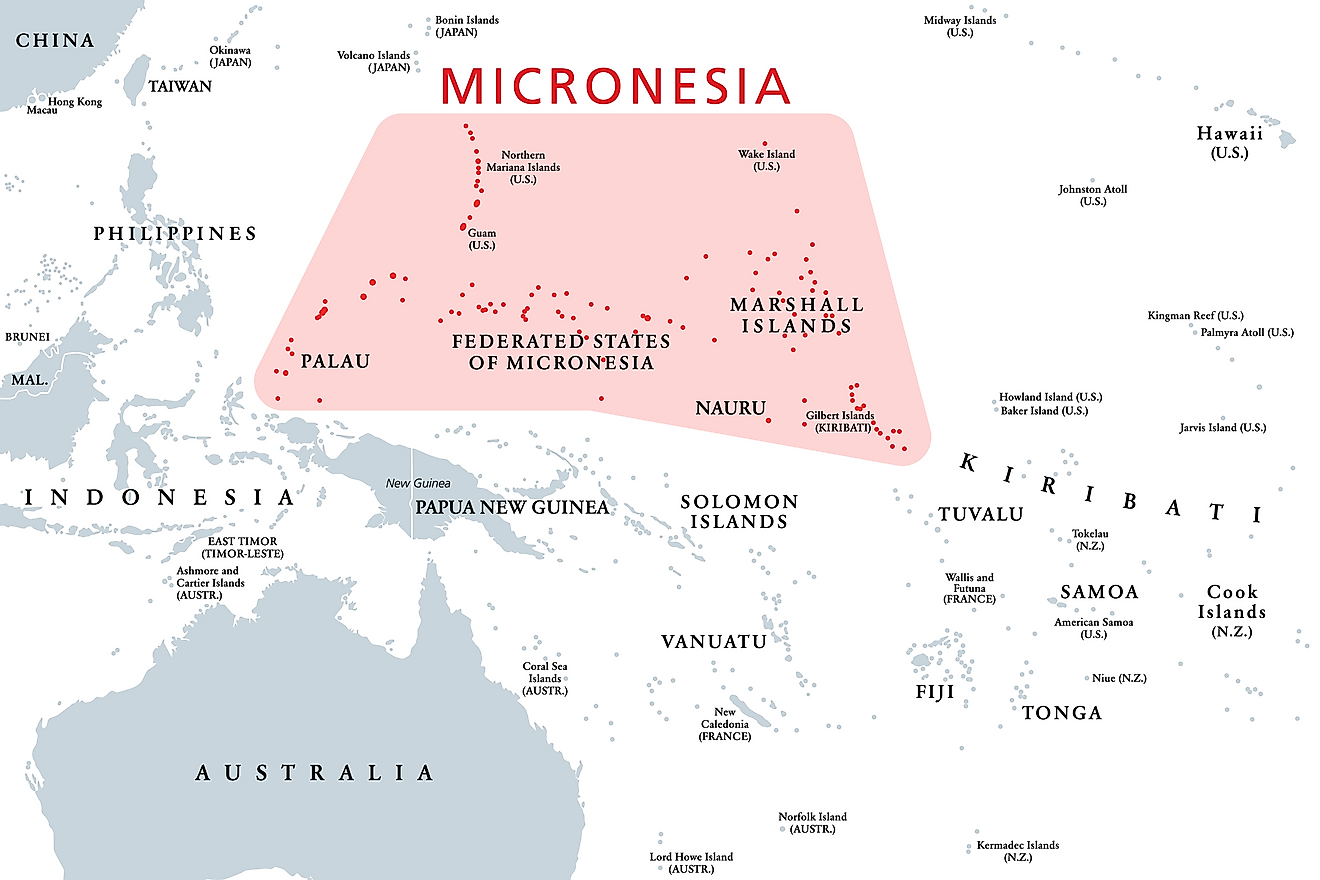
- Micronesia is located in the western Pacific Ocean.
- About 551,000 people live in the region of Micronesia.
- The Federated States of Micronesia is just one of several countries and territories located in the region of Micronesia.
- Rising sea levels threaten the very existence of countries and territories in Micronesia.
Micronesia, which is Greek for "small islands," is located in the western Pacific Ocean, east of the Philippines, west of Polynesia, north of Melanesia, and south of Japan. Not to be confused with the Federated States of Micronesia, which is just one country in the region, Micronesia is composed of several different countries and territories, making up thousands of small islands, which are of volcanic or coral origin. The independent countries of Micronesia include the aforementioned Federated States of Micronesia, Kiribati, Marshall Islands, Nauru, and Palau. Micronesia also consists of several US territories, including Guam, the Northern Mariana Islands, and several other minor US-controlled islands like Palmyra and Johnston Atoll. Around 551,000 people live in the region of Micronesia today.
Contents:
- Islands Of Micronesia
- History
- Economy
- People And Culture
- Biodiversity
- The Existential Threat Of Climate Change
Islands And Island Groups Of Micronesia
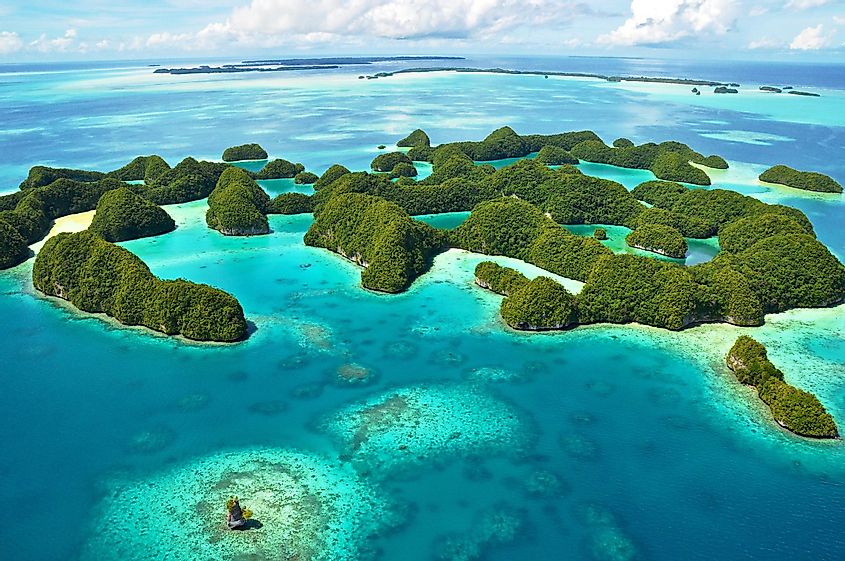
As previously mentioned, the region of Micronesia is made up of several countries and US territories stretching over thousands of islands. The largest island is the US territory of Guam, which measures 561 square km (217 square miles). Guam is part of the island chain known as the Mariana Islands, which consists of both Guam and the Northern Mariana Islands.
To the south of the Mariana Islands are the Caroline Islands, numbering about 500 coral islands in total. The Caroline Islands are comprised of two countries, the Federated States of Micronesia and Palau. The Federated States of Micronesia is a federal republic composed of four states, which are roughly divided based on ethnic and/or linguistic lines. To the west of the Federated States of Micronesia is the country of Palau, which is composed of around 340 volcanic and coral islands.
East of the Federated States of Micronesia is the Marshall Islands, which are all part of the Republic of the Marshall Islands. There are around 1,200 islands and islets in the Marshall Islands.
South of the Marshall Islands are the Gilbert Islands, all of which are part of the Micronesian nation of Kiribati. This island group consists of 33 islands, though only 20 of those are inhabited.
The tiny state of Nauru is located to the west of Kiribati but is not part of one of the major island groups.
A Brief History Of Micronesia
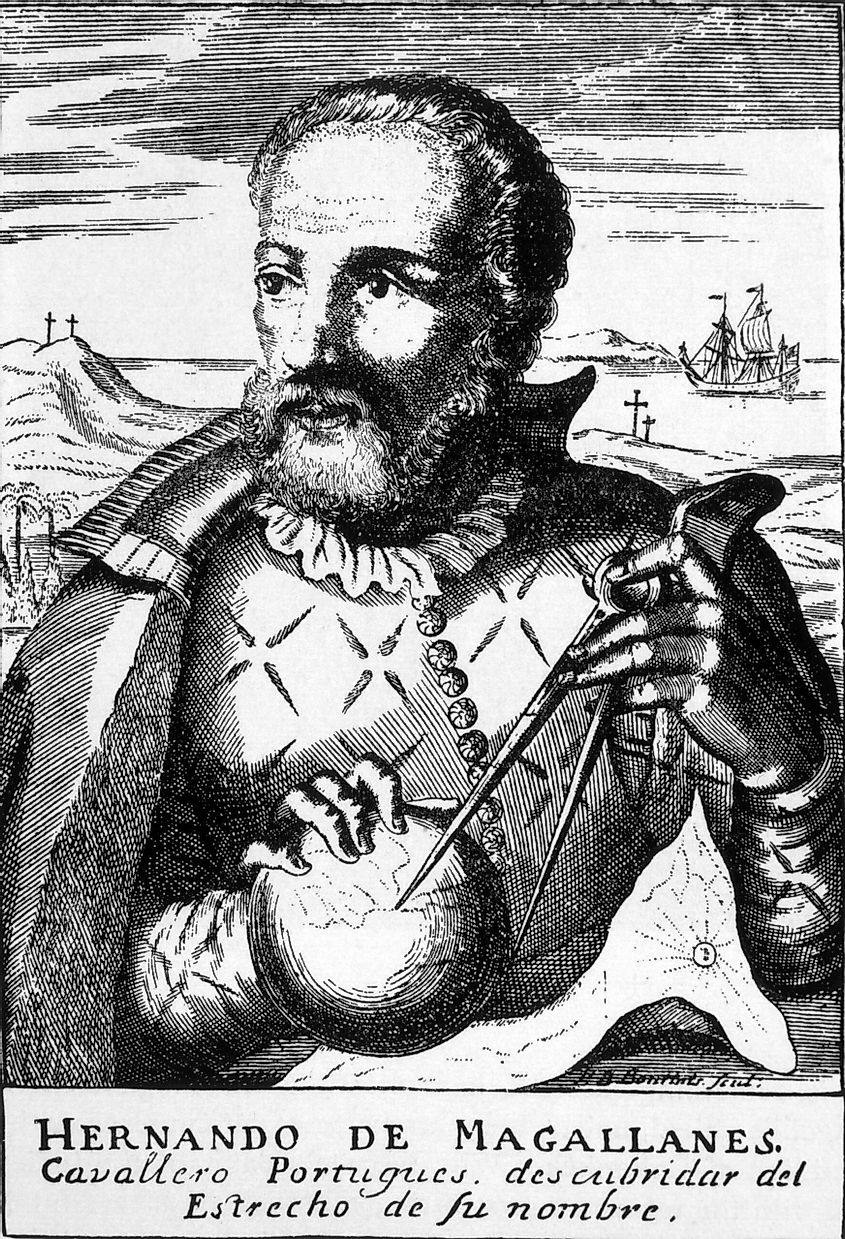
Micronesia was first settled about 3,500 years ago. Western Micronesia, consisting of Palau and the Mariana Islands, was likely settled by people from the modern-day Philippines and Indonesia. In contrast, Eastern Micronesia was likely first inhabited by people from Melanesia. The region was initially governed by individual chieftains. Around the time of 500 CE, however, a centralized kingdom under the Saudeleur Dynasty arose on the island of Pohnpei, now located in the Federated States of Micronesia. The center of this kingdom was known as Nan Madol. It was a city of small, artificial islands linked by a series of canals. Today, some call Nan Madol the Venice of the Pacific. For about 1,000 years, the Saudeleur Dynasty united and ruled Pohnpei, in which an estimated 25,000 people lived. By the time the first Europeans had reached Micronesia, however, the kingdom had collapsed.
Europeans began arriving in the 16th century, and the first European recorded visiting the islands was Ferdinand Magellan in 1521. By the early 17th century, Spain had colonized Guam, the Northern Mariana Islands, and the Caroline Islands. It was not until the late 19th century, however, that the whole of Micronesia was in European hands. After the brief Spanish-American War in 1898, the US took control of Guam from Spain. Germany controlled Nauru, as well as the Marshall, Caroline, and Northern Mariana Islands. The British controlled the Gilbert Islands.
After World War I, Germany’s territories in the Pacific were confiscated. Nauru was put under Australian control, while the other German-controlled islands came under Japanese rule. After World War II ended, the Japanese-controlled islands of Micronesia were put under what was known as the United Nations Trusteeship, governed by the US.
Nauru was the first country in Micronesia to become independent in 1968, followed by Kiribati in 1979. In 1986, the Trust Territory of the Pacific Islands, the trusteeship given to the US by the UN after WWII, became the independent states known as the Federated States of Micronesia and the Republic of the Marshall Islands. The remainder of the Micronesia region, including Guam and the Northern Mariana Islands, remain under US control.
Economy
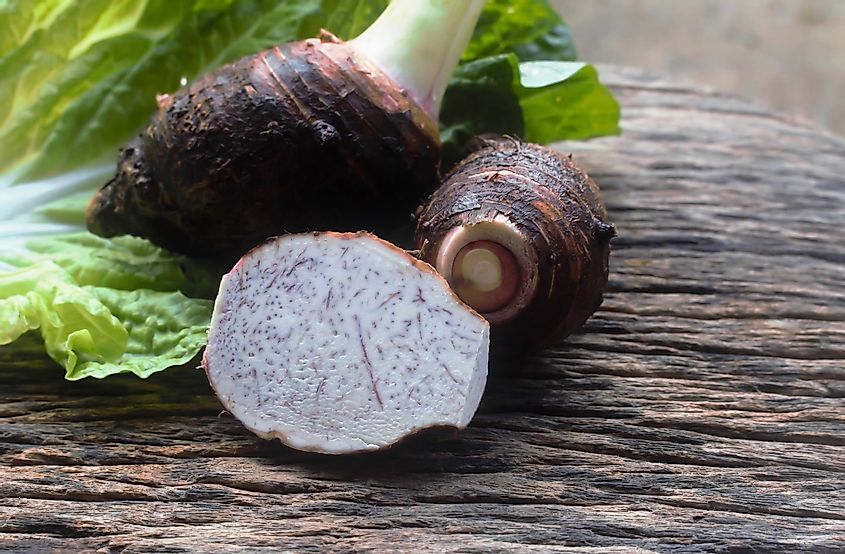
Agriculture and fishing are the mainstays of the economy in the region of Micronesia, mostly on a subsistence basis. The main staples include breadfruit, taros, coconuts, bananas, yams, cassava, and sweet potatoes. Some people in Micronesia raise livestock, such as pigs and dogs. In Nauru and Kiribati, the mining of phosphate was a major economic activity. By the late 20th century, however, the phosphate deposits were largely exhausted.
There is some commercial fishing activity in the waters of Micronesia. In addition, countries in the region have allowed other countries to use their territory for specific activities. Nauru, for example, has hosted many people seeking asylum in Australia. Territory in the Marshall Islands and Guam is used by the US military. And Kiribati’s proximity to the equator has attracted interest from national and transnational entities wanting to build spacecraft-launching facilities in the country. Tourism is another industry that has seen significant growth in recent years.
Despite some development of local industry, however, the countries and territories of Micronesia are still heavily dependent on foreign aid for revenue, which comes mainly from the US. They are also very dependent on imports, which come mainly from Japan, the US, Australia, and New Zealand.
People And Culture
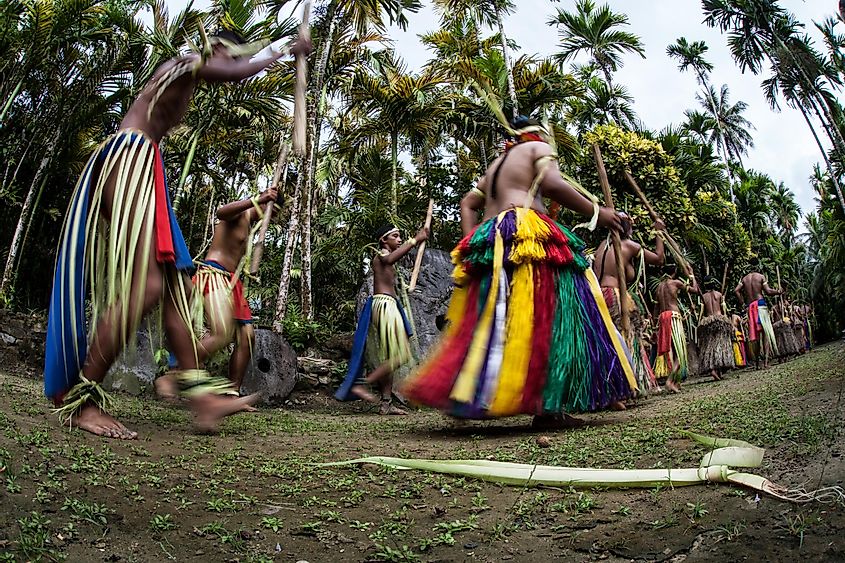
The people of Micronesia are a mixture of many different ethnic, linguistic, and cultural groups. Most of the population of the region are of Micronesian descent, with some having mixed Micronesian and Melanesian ancestry. There are also small groups of Southeast Asians and Europeans. The Chuukese make up about half the population of the Federated States of Micronesia, while the Chamorro are the main Indigenous inhabitants of Guam and the Northern Mariana Islands. The countries of Nauru, Palau, and Kiribati are inhabited mostly by their own Indigenous populations.
There are also many different languages and dialects spoken in Micronesia. The Federated States of Micronesia alone is home to several different languages, including Chuukese, Yapese, Pohnpeian, and Kosrae. The people of Palau, Nauru, and the Marshall Islands have their own Indigenous languages, known simply as Palauan, Nauruan, and Marshallese. The Indigenous language of Kiribati is known as I-Kiribati, while Chamorro is spoken by the people of the same name in Guam and the Northern Mariana Islands. English is an official language in most of Micronesia’s countries and territories.
In terms of religion, although some people in Micronesia still practice Indigenous religious traditions, the majority of the population is now Christian. Micronesians are mostly affiliated with either the Roman Catholic Church, or Protestant denominations.
Inasmuch as Western culture has significantly changed the way of life for Indigenous Micronesians, traditional customs and practices are still alive and well in the region. Some Micronesians still wear traditional dress. In the Federated States of Micronesia, for example, male members of the Yap and Chuuk peoples still wear loincloths, while women wear grass skirts, called Lavalavas (sarongs). Some in the region are still great seafarers and are even able to construct traditional Micronesian outrigger canoes.
For entertainment, many Micronesians enjoy traditional dances and music. In Kiribati, for instance, song and dance competitions are very common. Still, many Micronesians have taken to enjoying more Western-style types of entertainment, including sports like volleyball and football (soccer). Baseball is particularly popular in Palau. Immigrant communities from Asian countries, such as the Philippines, Korea, Japan, and China, as well as people from the mainland US, have also added to the multicultural mosaic of Micronesia.
Biodiversity
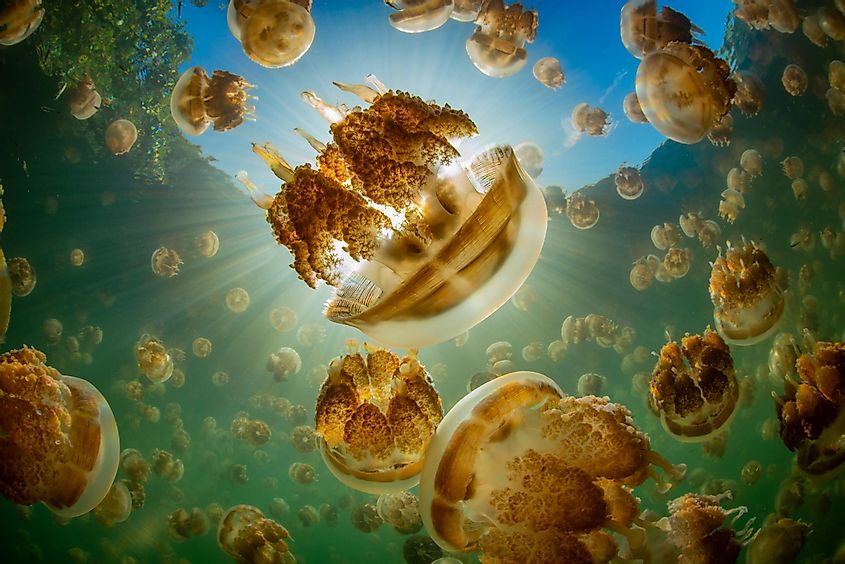
The region of Micronesia boasts numerous landscapes and ecosystems, from coral reefs to tropical forests. The islands of the region are either of volcanic origin or coral islands. There is also a wide variety of plant and animal life. In Palau, for example, there are more species of marine life than in any other similar-sized country, which is why the island nation is a popular destination for scuba divers. This marine life includes fish, sea urchins, snails, clams, starfish, squid, and more. If you ever go swimming or scuba diving in Micronesia, you’ll have to watch out for jellyfish, too. Micronesia’s animal life also includes many colorful birds, some of whom live in the vast archipelago and others who migrate at certain times of the year.
Plantlife in Micronesia is also diverse and includes beach morning glory, Polynesian ironwood trees, pandanus, coconut palms, and breadfruit. Coconuts are a main staple in the diet of Micronesians who still live a traditional lifestyle. In fact, some Micronesians use the sap of coconuts, known as toddy, for cooking and for making a traditional sweet beverage that, when fermented, becomes intoxicating.
The Existential Threat Of Climate Change
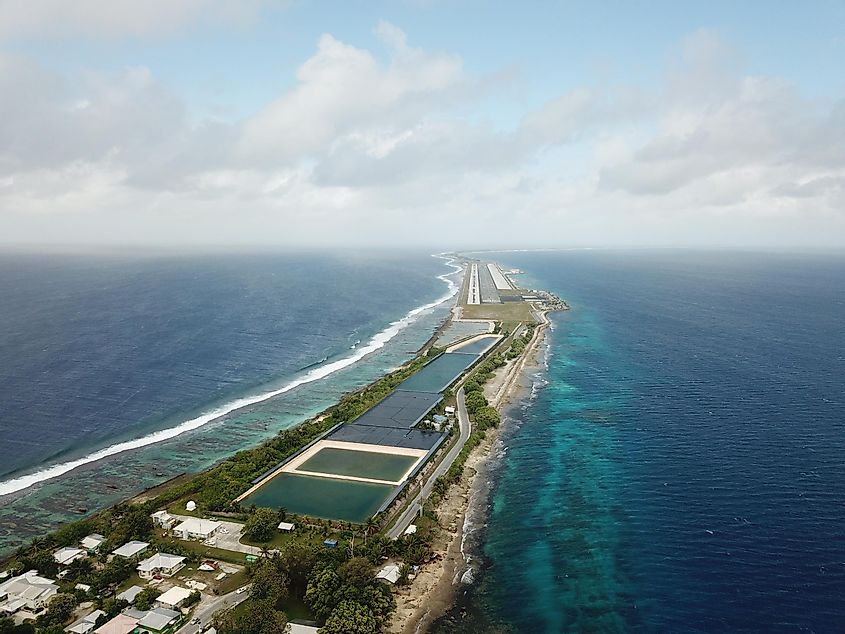
Every part of the world is affected by climate change. The region of Micronesia is no exception. In fact, climate change threatens the very existence of the region’s countries and territories.
The reason for this existential threat is rising sea levels. Much of Micronesia’s many islands are just a few feet above sea level. Therefore, even a slight rise in sea levels, which occurs because of melting ice in the world’s Arctic and Antarctic regions, has the potential to destroy whole countries. If humanity does not curb pollution enough to halt the continuing global warming of the planet, some of Micronesia’s countries and territories, if not the whole region, could cease to exist.
